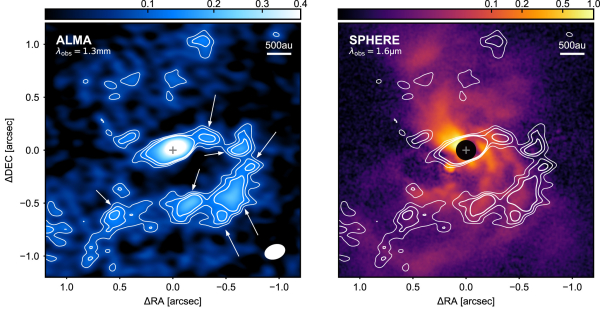We can now DIRECTLY OBSERVE planets being born!
Each of the arrow-marked blobs is a likely planet-in-the-making around the infant star FU Orionis (great name), located 1,350 light years away in the constellation Orion.
https://arxiv.org/abs/2404.05797 #space #science #astronomy #astrodon
Each of the arrow-marked blobs is a likely planet-in-the-making around the infant star FU Orionis (great name), located 1,350 light years away in the constellation Orion.
https://arxiv.org/abs/2404.05797 #space #science #astronomy #astrodon
Direct imaging of exoplanets
Over the past 4 decades, the exploration of planets beyond our solar system has yielded the discovery of over 5600 exoplanets orbiting different stars.arXiv.org


Corey S Powell •
It originated with Swedish philosopher Emanuel Swedenborg, way back in 1734. But only now can astronomers directly observe that, yes, planets really do form in clouds around newborn stars. Science takes time.
https://blogs.futura-sciences.com/e-luminet/2016/09/28/cosmogenesis-8-the-nebular-hypothesis/ #science #space #astronomy #nature
Cosmogenesis (8) : The Nebular Hypothesis, by Jean-Pierre Luminet
Jean-Pierre LUMINET (e-LUMINESCIENCES: the blog of Jean-Pierre Luminet)Jennifer Ouellette hat dies geteilt